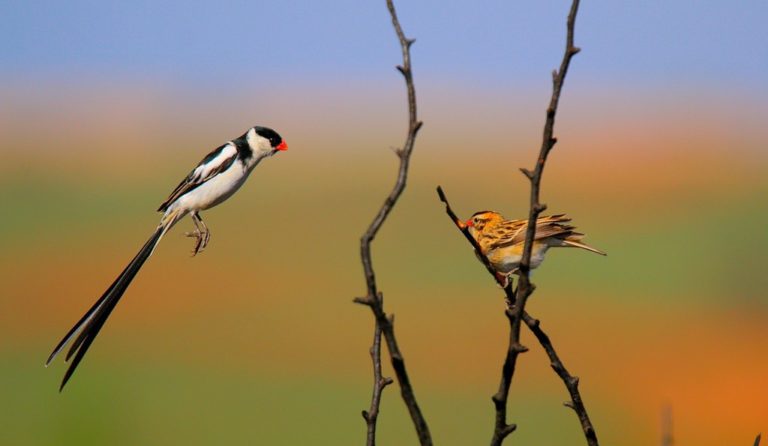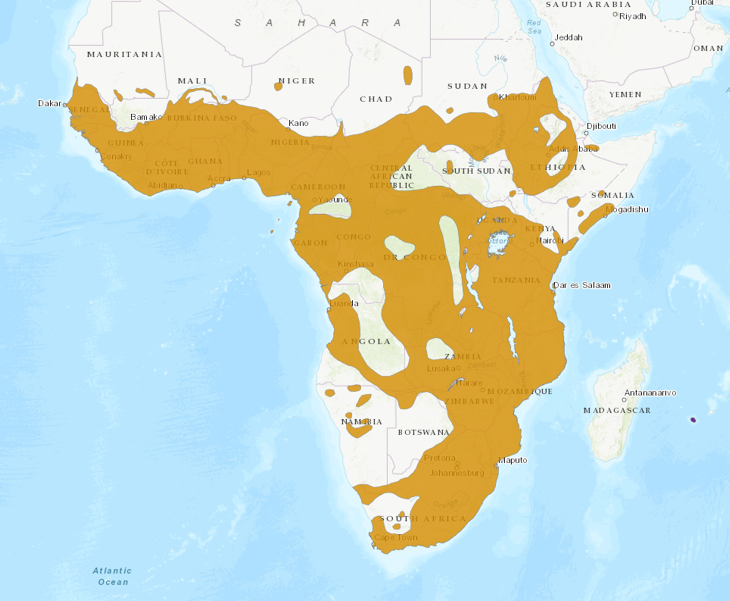Birdfinding.info ⇒ Generally common and often conspicuous across most of sub-Saharan Africa. In the U.S., the introduced population in California is thriving and can often be seen at sites including the Los Angeles County Arboretum, Peck Road Water Conservation Park, Ken Malloy Harbor Regional Park, and Aurora Park in Mission Viejo. On Puerto Rico, it is especially common in the southwest around Lajas, Laguna Cartagena, and Cabo Rojo; and along the northern coast: e.g., Caño Tiburones, Hacienda La Esperanza, and Gramas Lindas in Toa Baja.
Pin-tailed Whydah
Vidua macroura
Family: Viduidae
Sub-Saharan Africa.
Widespread and numerous in open and semiopen habitats of sub-Saharan Africa from the Sahel to Cape Town. Generally tolerant of human development, readily occupying settled and agricultural areas.
Occurs north to southern Mauritania, central Mali, southern Niger, southern Chad, east-central Sudan, and northern Eritrea. Southward, it occurs nearly throughout the continent wherever suitable habitat exists, and on Bioko and São Tomé in the Gulf of Guinea.
Like other whydahs and indigobirds, the Pin-tailed Whydah is an obligate brood parasite, but unlike the others, it does not rely exclusively on a single target species, and it is by far the commonest and most widely distributed member of its family.
Introduced populations are well-established in southern California (from the San Fernando Valley east to San Bernardino and south to San Diego) and on Puerto Rico. The Puerto Rican population had colonized Vieques, but has not been reported there since Hurricane María hit the islands in 2017.
Another introduced population appears at least tenuously established in Portugal (mainly near the coast from the Tejo River estuary north to Porto).
Small numbers of escapees have persisted for a few years, and probably bred, in Kuwait, Réunion, Singapore, and in the southeastern U.S. at various locations from Houston to Miami, but these do not appear to have formed self-sustaining populations.
Identification
Breeding male is unique and unmistakable: a black-and-white finch with an orange bill and four greatly elongated, flat, black tail-feathers.
The basic and female plumages resemble those of several other species of whydah and indigobird, but have bolder stripes on the head and blackish legs.
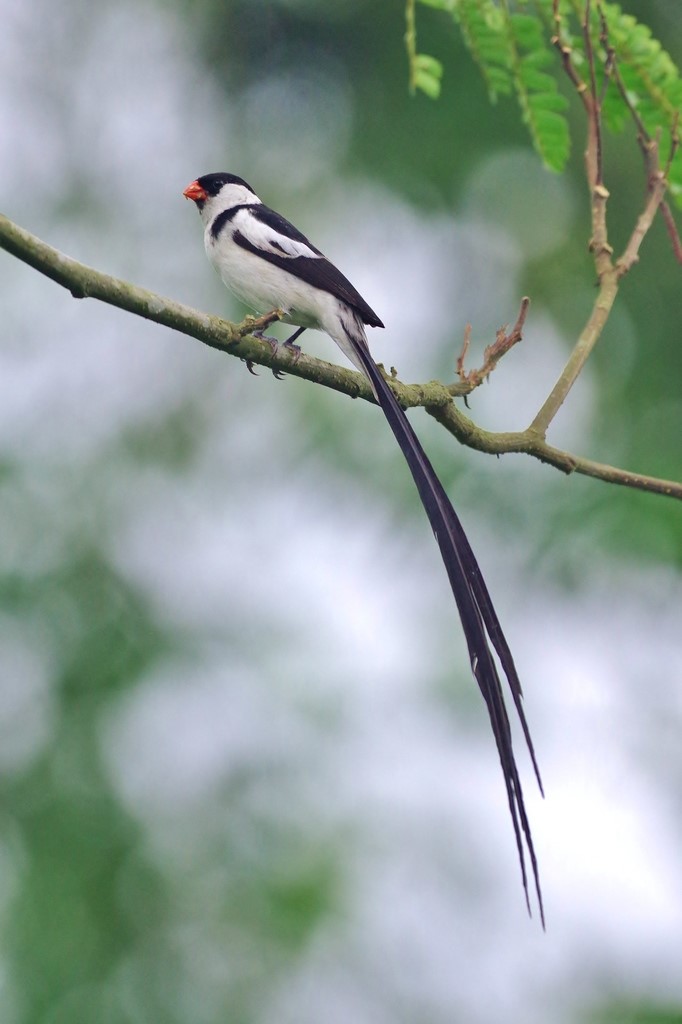
Pin-tailed Whydah, male in breeding plumage. (Caué, São Tomé; January 7, 2018.) © Thibaud Aronson
The male in breeding plumage has a crisply defined black-and-white pattern: a jet-black helmet and mostly black upperparts which contrast with mostly white underparts including the throat and neck, and white rump and lower back.
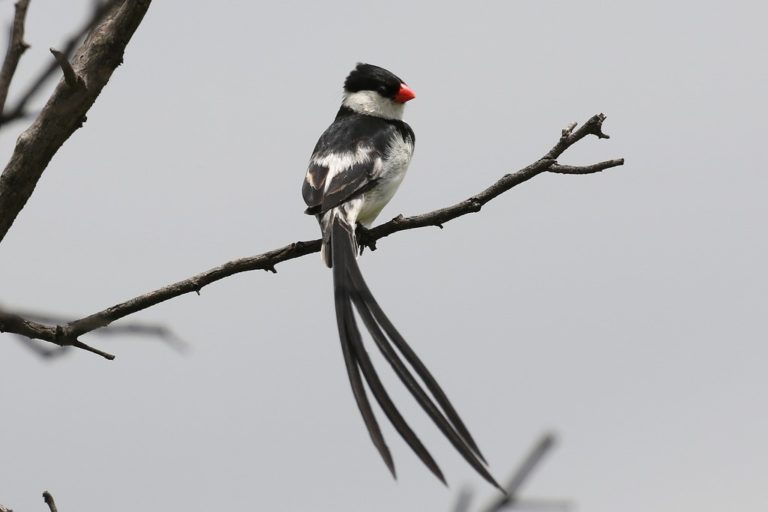
Pin-tailed Whydah, male in breeding plumage. (The Greater Woodmead Estate, Johannesburg, South Africa; January 17, 2022.) © Fayne Connelly
Large white wing patches are visible at rest and in flight.
The elongated tail feathers (or modified uppertail coverts) extend approximately twice the length of the body (adding about 20 cm to its total length).

Pin-tailed Whydah, male in breeding plumage. (Pilanesberg National Park, North West, South Africa; January 3, 2021.) © Jonathan Breytenbach
The male in basic plumage lacks the elongated tail feathers. Its upperparts are boldly streaked rusty-brown and black, and its head becomes buffy with bold broad black stripes on the crown and markings on the cheeks.
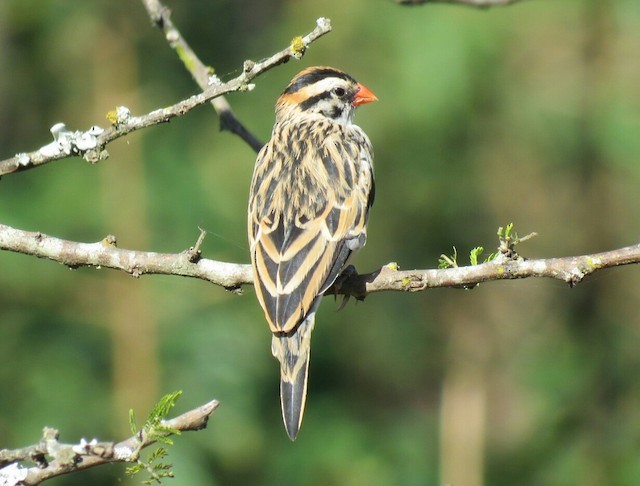
Pin-tailed Whydah, female or male in basic plumage. (Tala Private Game Reserve, Kwazulu-Natal, South Africa; May 21, 2017.) © Brad Arthur
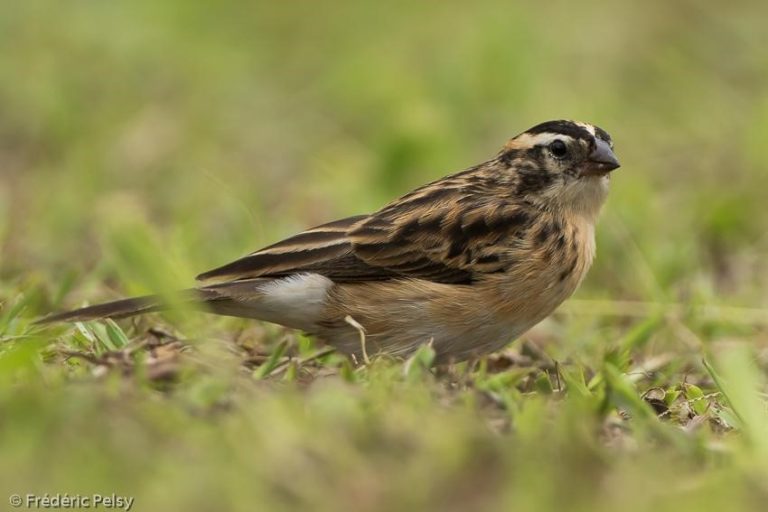
Pin-tailed Whydah, female or male in basic plumage with a mostly blackish bill. (Kibale National Park, Uganda; October 17, 2015.) © Frédéric Pelsy
The underparts become buffy overall, often with variable rustier tones and a few streaks on the sides of the chest. The bill often becomes duller and darker, but can be either orange or blackish or intermediate.
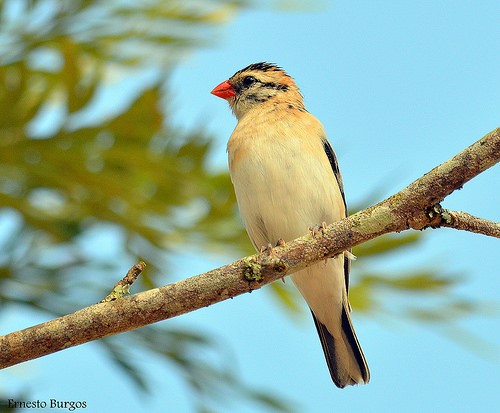
Pin-tailed Whydah, female or male in basic plumage. (Barrio Naranjo, Comerío, Puerto Rico; May 25, 2014.) © Ernesto Burgos
Females resemble basic plumage males—they are often indistinguishable. The female’s bill can either blackish or orangish, like the male’s.

Pin-tailed Whydah, female. (Huntington Central Park East, Huntington Beach, California; May 25, 2021.) © Alison Davies
Males in transition into and out of breeding plumage go through various irregular blotchy stages.
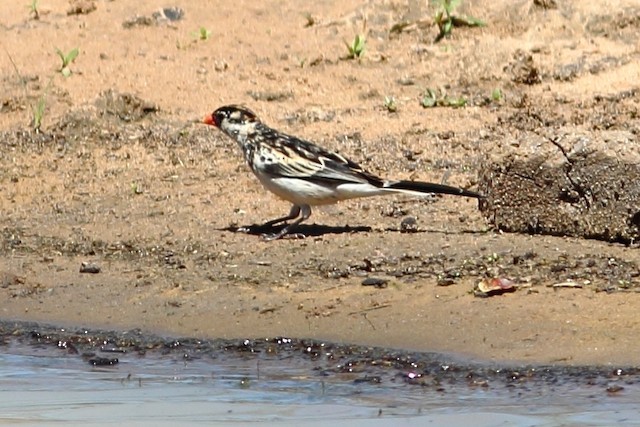
Pin-tailed Whydah, male in transitional plumage. (Mkhuze Game Reserve, Kwazulu-Natal, South Africa; September 30, 2012.) © Alan Selin
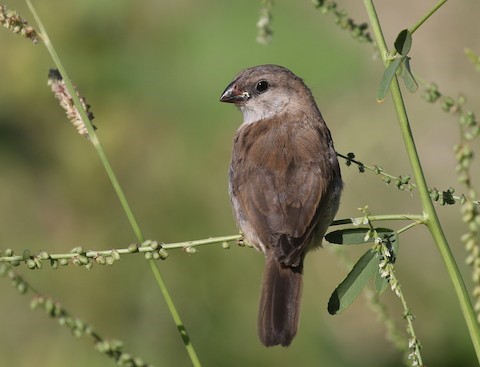
Pin-tailed Whydah, juvenile. (San Timoteo Creek, Redlands, California; August 29, 2021.) © Matthew Grube
Juveniles are very different. They are essentially unmarked with plain dark-brown upperparts and buffy underparts. The juvenile’s bill is black.
Notes
Monotypic species.
More Images of the Pin-tailed Whydah
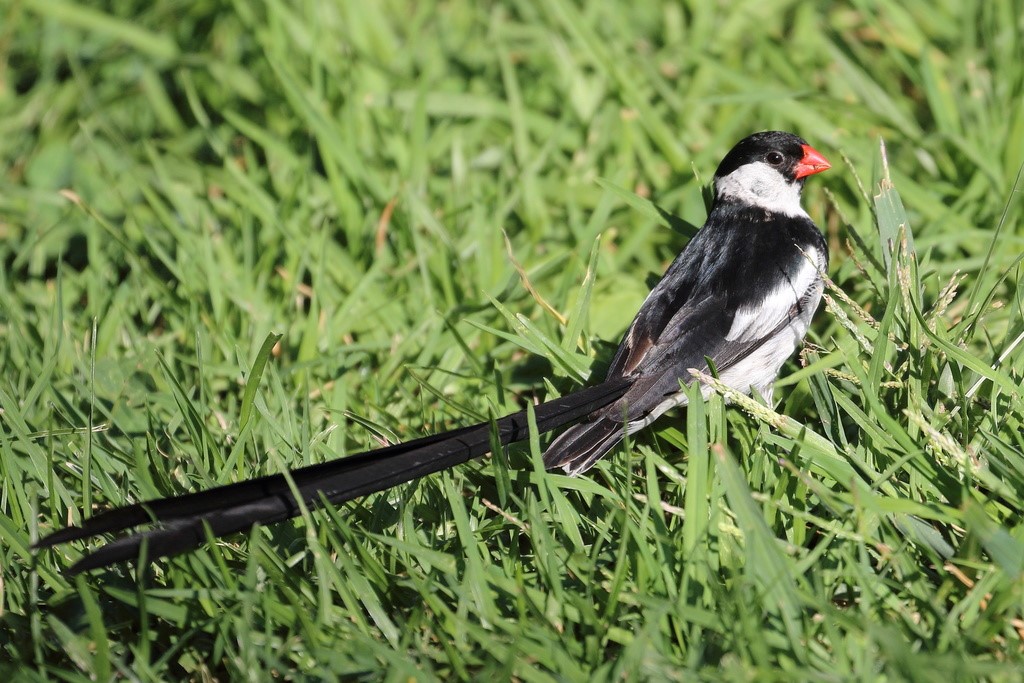
Pin-tailed Whydah, male in breeding plumage. (Pasadena, California; September 14, 2021.) © nutsaboutkitties

Pin-tailed Whydah, male in display flight. (Caué, São Tomé; January 7, 2018.) © Thibaud Aronson

Pin-tailed Whydah, male displaying to female. (Kruger National Park, South Africa; November 29, 2019.) © Maryse Neukomm
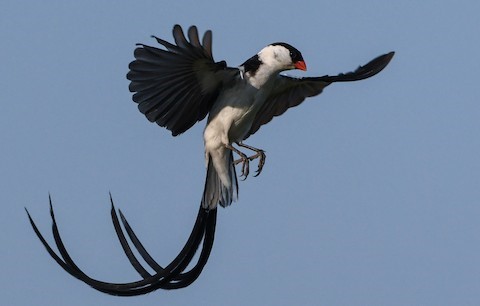
Pin-tailed Whydah, male in display flight. (Kruger National Park, South Africa; November 29, 2019.) © Maryse Neukomm
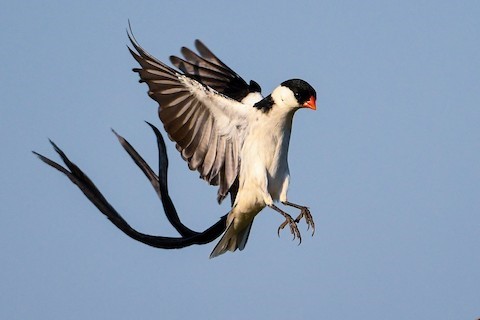
Pin-tailed Whydah, male in display flight. (Kruger National Park, South Africa; November 29, 2019.) © Maryse Neukomm
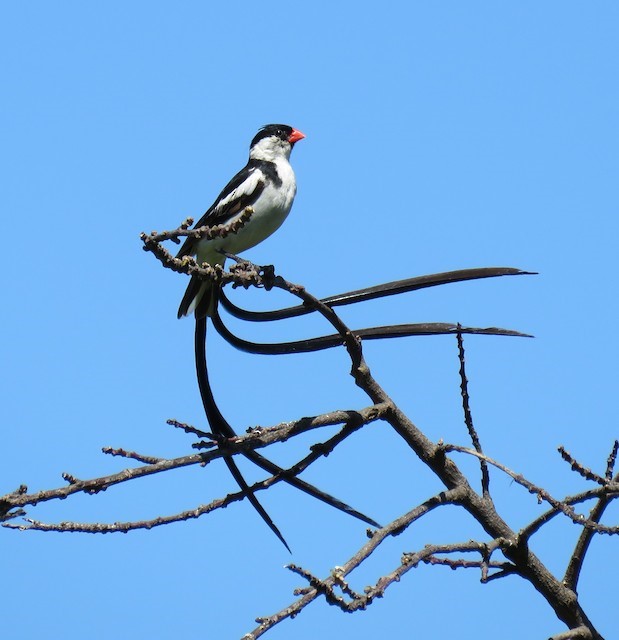
Pin-tailed Whydah, male in breeding plumage. (Umdloti Beach, Kwazulu-Natal, South Africa; February 22, 2016.) © Brad Arthur

Pin-tailed Whydah, male in breeding plumage. (Meru, Tanzania; January 11, 2020.) © Alex R
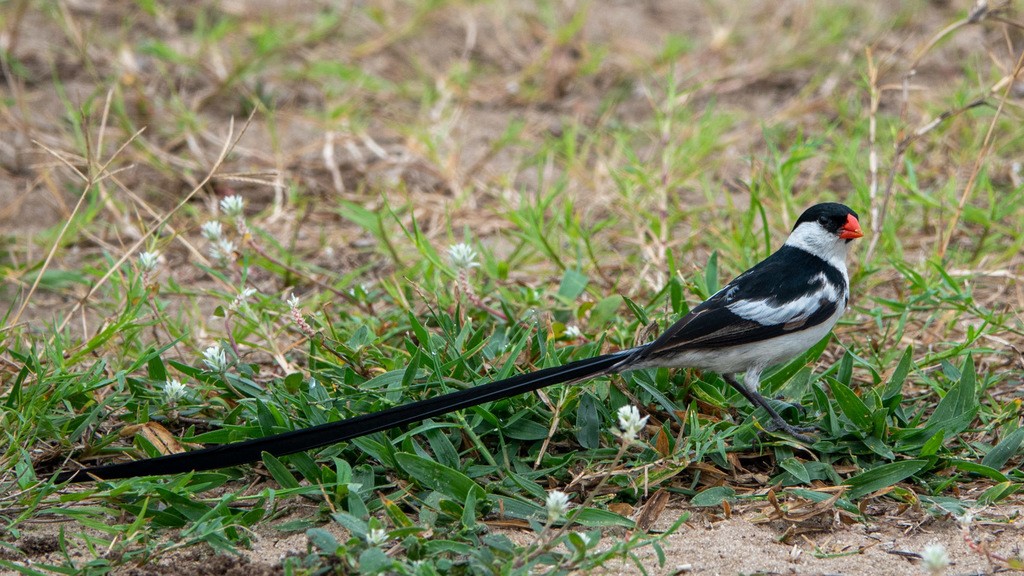
Pin-tailed Whydah, male in breeding plumage. (Pointe-Noire, Congo Republic; December 14, 2020.) © Philippe Lécuyer
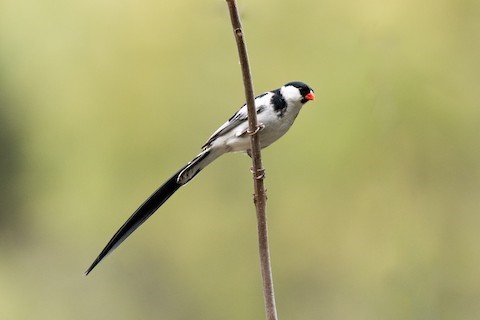
Pin-tailed Whydah, male in breeding plumage. (Huntington Central Park East, Huntington Beach, California; May 15, 2021.) © Andrea Carpio

Pin-tailed Whydah, male in breeding plumage. (Same, Tanzania; April 27, 2015.) © Markus Lilje
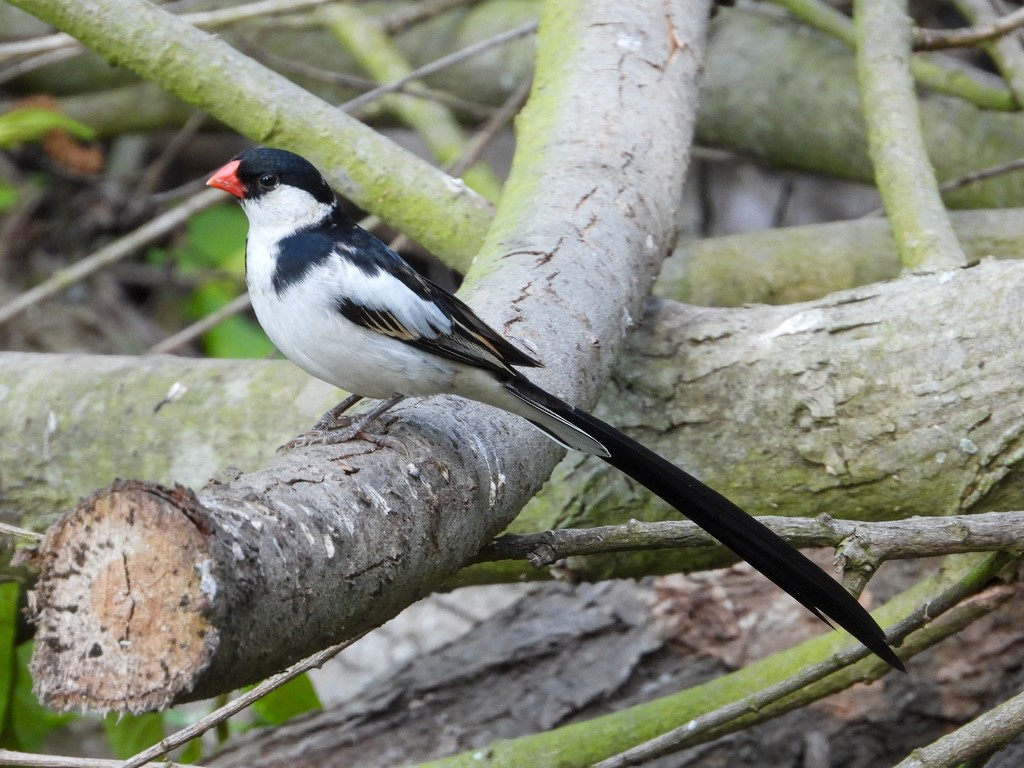
Pin-tailed Whydah, male in breeding plumage. (Huntington Central Park East, Huntington Beach, California; May 8, 2021.) © James Maley

Pin-tailed Whydah, basic plumage. (Ocean Air Recreation Center, San Diego, California; October 6, 2021.) © Jonathan Casanova

Pin-tailed Whydah, basic plumage. (Huntington Central Park East, Huntington Beach, California; May 27, 2017.) © James McNamara

Pin-tailed Whydah, male in transitional plumage. (Bwamanda, D.R. Congo; November 1, 2012.) © Jan van den Broeck

Pin-tailed Whydah, basic plumage. (Addicks Reservoir, Houston, Texas; February 6, 2021.) © Agnieszka Skuza
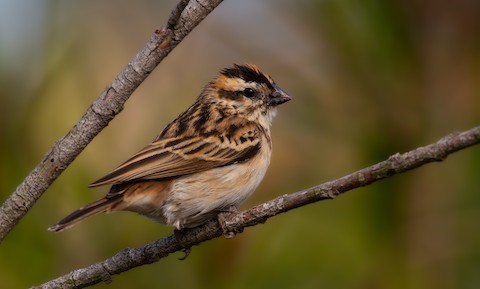
Pin-tailed Whydah, basic plumage. (Big Canyon, Upper Newport Bay, Newport Beach, California; June 27, 2021.) © Sasha Cahill
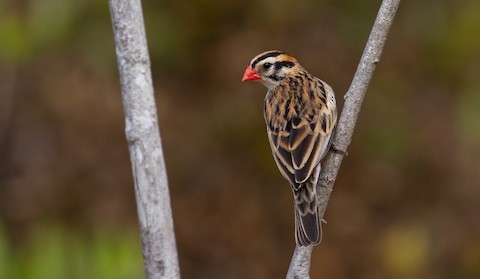
Pin-tailed Whydah, female. (Big Canyon, Upper Newport Bay, Newport Beach, California; June 27, 2021.) © Sasha Cahill

Pin-tailed Whydah, female. (Big Canyon, Upper Newport Bay, Newport Beach, California; June 27, 2021.) © Sasha Cahill
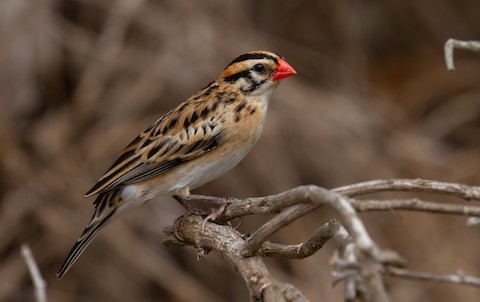
Pin-tailed Whydah, female. (Big Canyon, Upper Newport Bay, Newport Beach, California; June 27, 2021.) © Sasha Cahill
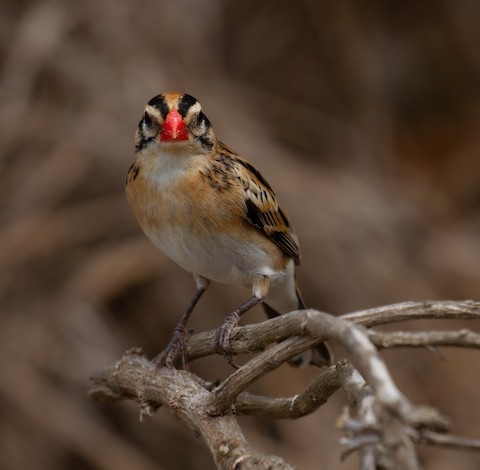
Pin-tailed Whydah, female. (Big Canyon, Upper Newport Bay, Newport Beach, California; June 27, 2021.) © Sasha Cahill
References
BirdLife International. 2018. Vidua macroura. The IUCN Red List of Threatened Species 2018: e.T22719988A132134939. https://dx.doi.org/10.2305/IUCN.UK.2018-2.RLTS.T22719988A132134939.en. (Accessed February 22, 2022.)
Borrow, N., and R. Demey. 2004. Birds of Western Africa. Princeton University Press.
eBird. 2022. eBird: An online database of bird distribution and abundance. Cornell Lab of Ornithology, Ithaca, N.Y. http://www.ebird.org. (Accessed February 22, 2022.)
Kirwan, G.M., A. Levesque, M. Oberle, and C.J. Sharpe. 2019. Birds of the West Indies. Lynx Edicions, Barcelona.
Raffaele, H. 1989. A Guide to the Birds of Puerto Rico and the Virgin Islands. Princeton University Press.
Raffaele, H., J. Wiley, O. Garrido, A. Keith, and J. Raffaele. 1998. A Guide to the Birds of the West Indies. Princeton University Press.
Redman, R., T. Stevenson, T., and J. Fanshawe. 2009. Birds of the Horn of Africa: Ethiopia, Eritrea, Djibouti, Somalia, and Socotra. Princeton University Press.
Sinclair, I., and P. Ryan. 2003. Birds of Africa South of the Sahara. Princeton University Press.
Sinclair, I., P. Hockey, W. Tarboton, and P. Ryan. 2011. Birds of Southern Africa (Fourth Edition). Random House Struik (Pty) Ltd. Cape Town, South Africa.
Xeno-Canto. 2022. Pin-tailed Whydah – Vidua macroura. https://xeno-canto.org/species/Vidua-macroura. (Accessed February 22, 2022.)
